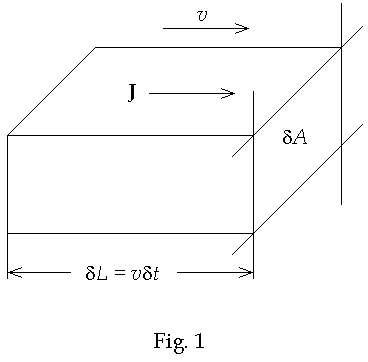
Conservation
of Mass
Back
to Physics World
Back to Classical Mechanics
The
principle of conservation of mass refers to the fact that when the amount of
mass within a region of space decreases then the amount of mass outside the
volume increases. The total mass in the universe thus remains constant. To place
this in a mathematical form define mass current vector, J, as a
vector whose direction is the direction of the flow of matter and whose
magnitude is mass per unit time per unit area. See Fig. 1 below

Mass
density, r, is defined as mass per unit volume. I.e.
![]()
The
magnitude, J, of the mass current vector, J, is then given by

From the
above diagram we know that
![]()
Substituting into Eq. (2) we find that

This is
just momentum density, i.e.
![]()
The
total mass within a volume, V, of space in term of mass density is
![]()
Let S be
the surface bounding the volume V. The time rate of decrease of the mass
within the volume must be accounted for by a mass flux through the surface. I.e.
![]()
Change
the surface integral into a volume integral using Stokeís Theorem

Since
this must hold in general the integrands must be equal. Therefore
![]()
Substituting
in the momentum density from Eq. (5) and rearranging terms we find
![]()
This is
known as Eulerís Equation or the equation of continuity and
is the mathematical expression for the local conservation of mass.